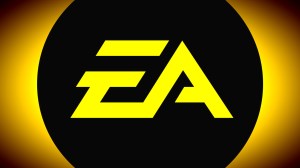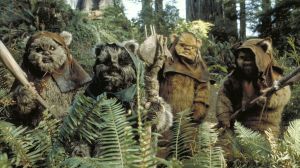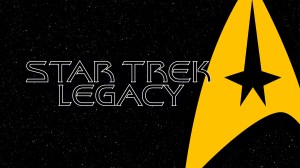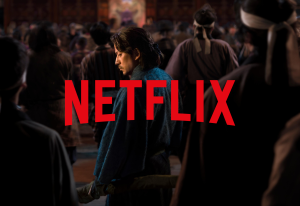Wonder Woman 1984 has officially made its debut, with audiences getting a chance to check it out both in theaters and on HBO Max. The blockbuster is the latest live-action extension of the DC Films universe, providing a nostalgic and epic new story involving Gal Gadot’s Diana Prince/Wonder Woman. As those who have seen the film know, there’s definitely a lot to take in, especially as the film draws inspiration from all corners of the DC Comics universe. This became abundantly clear in Wonder Woman 1984‘s end credits, which give thanks to a wide array of writers and artists who have brought the Princess of Themyscira to life over the years.
Videos by ComicBook.com
From Golden Age icons to modern-day creatives, there are quite a lot of people whose work influenced Wonder Woman 1984. Here’s a rundown of who they are — and how they influenced the overall Wonder Woman canon.
Alex Ross and Mark Waid

First on the list of credits are Alex Ross and Mark Waid, the creative team behind the 1996 Kingdom Come miniseries, which first introduced Wonder Woman’s golden suit of armor. The armor was adapted into Wonder Woman 1984 as the Golden Eagle suit worn by Asteria (Lynda Carter), which was later rediscovered and repurposed by Diana.
Keith Giffen, J.M. DeMatteis, and Kevin Maguire

Also among the list are Keith Giffen, J.M. Dematteis, and Kevin Maguire, the creative team behind the creation of Maxwell Lord. Lord first appeared in 1987’s Justice League #1, and was established as a businessman who was secretly pulling strings to create the Justice League — all while under the influence of a villainous computer program.
Gardner Fox

While he never technically wrote a solo Wonder Woman story, Gardner Fox had a profound impact on the DC Comics universe we know today, penning over 1,500 stories for the publisher. In particular, Fox is known for creating the concept of the Justice Society of America and the Justice League of America — two teams that counted iterations of Wonder Woman among their members. Issue #19 of Justice League of America featured the first appearance of Doctor Destiny’s Dreamstone, which served as a pivotal part of Wonder Woman 1984. He also created Moon Girl, a now public-domain Golden Age superhero who was regarded by many to be similar to Wonder Woman.
Ramona Fradon

Fradon only has two solo Wonder Woman credits under her name — 1989’s Wonder Woman Annual #2, and this year’s landmark Wonder Woman #750 anniversary issue. She also worked on The Brave and the Bold and Super Friends, two titles that definitely have a similar timeless energy to Wonder Woman 1984.
Bob Haney

In addition to working alongside Fradon on the aforementioned Brave and the Bold, Bob Haney is perhaps best known for his run on the Teen Titans. This included him co-creating Donna Troy/Wonder Girl, the Teen Titans member best associated with Wonder Woman.
Phil Jimenez

One of the most prolific modern-day creatives on Wonder Woman, Phil Jimenez served as writer/artist of the main Wonder Woman title from 2000 to 2003. He also is set to be the artist on Kelly Sue Deconnick’s Historia: The Amazons, an upcoming (and long-awaited) DC Black Label book that will dive into Themysciran lore.
George Perez

To an extent, Wonder Woman wouldn’t be who she is today without the work of George Perez. In 1987, Perez rebooted the character, establishing a slew of new details around Diana’s lore. This included renaming Paradise Island as Themyscira, having Diana be closer tied to the Greek Gods, and establishing the Barbara Minerva iteration of Cheetah. Perez worked on the title – either as a writer and/or artist – for five years.
Greg Potter and Len Wein

Two other people who were instrumental in Perez’s run were Greg Potter and Len Wein, who helped co-write the title. Wein took over the role from Potter after Wonder Woman #2, and also helped create Cheetah in Wonder Woman #7.
Harry G. Peter

While not credited on Wonder Woman in the same way as William Moulton Marston, Harry G. Peter had a significant role in her creation. The illustrator served as the artist for Wonder Woman’s first appearance in All Star Comics #8, and continued on the title up until his death in 1958.
Greg Rucka

Another of the most prolific Wonder Woman writers is Greg Rucka, whose work on the character can be seen throughout Wonder Woman 1984. Namely, Rucka served as the writer on The OMAC Project, a 2005 limited series that served as part of the lead-up to the Infinite Crisis event. That event is perhaps the most famous for featuring Maxwell Lord’s biggest display of villainy, which culminated in Wonder Woman being forced to snap his neck on a worldwide broadcast. Rucka also served as the writer on Wonder Woman throughout the mid-2000s, both on the main title and on the Wonder Woman: The Hiketeia graphic novel.
Rucka also served as the writer of the DC Rebirth relaunch of Wonder Woman, telling a story that spanned both the modern-day and her early days as a hero in Themyscira.
Jesus Saiz

The list also includes multiple prominent artists who worked alongside Rucka, starting with Jesus Saiz, who illustrated the aforementioned The OMAC Project miniseries.
Rags Morales

Also on the list is Rags Morales, who served as the illustrator on six issues of Rucka’s 2005-2006 Wonder Woman run.
Nicola Scott

Artist Nicola Scott’s work on Wonder Woman began in 2010, both with a three-issue Blackest Night: Wonder Woman miniseries alongside Rucka, and multiple issues of the flagship Wonder Woman series alongside writer Gail Simone. She reteamed with Rucka during the Rebirth relaunch, and again on the aforementioned Wonder Woman #750.
The Marston Family

And finally, the credits include a special thanks to the Marston family, who continue the legacy of Wonder Woman co-creator William Moulton Marston. Both Marston’s wife, Elizabeth Holloway Marston, and their lover, Olive Byrne, influenced the creation of Wonder Woman, something that was dramatized in the 2017 film Professor Marston and the Wonder Women.








